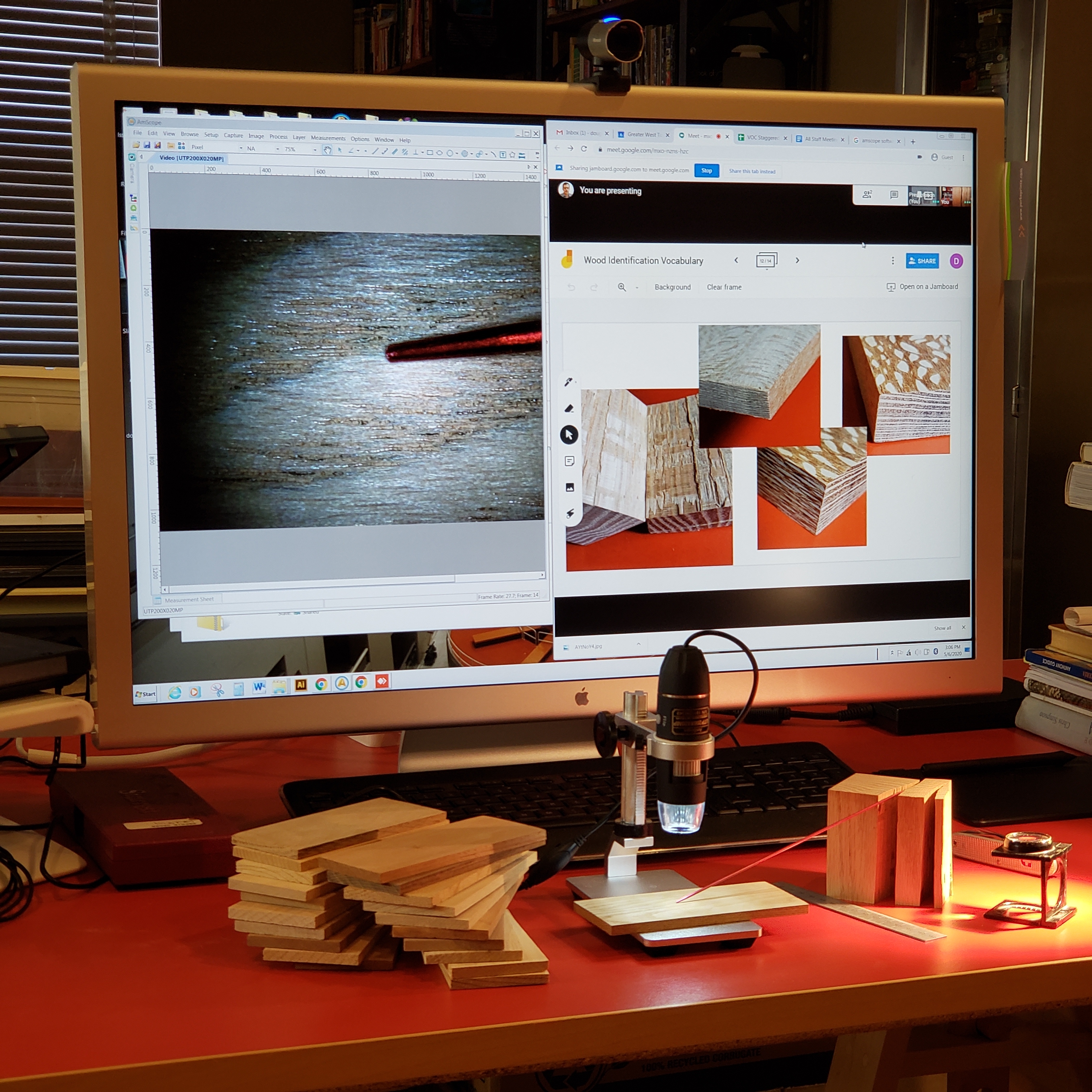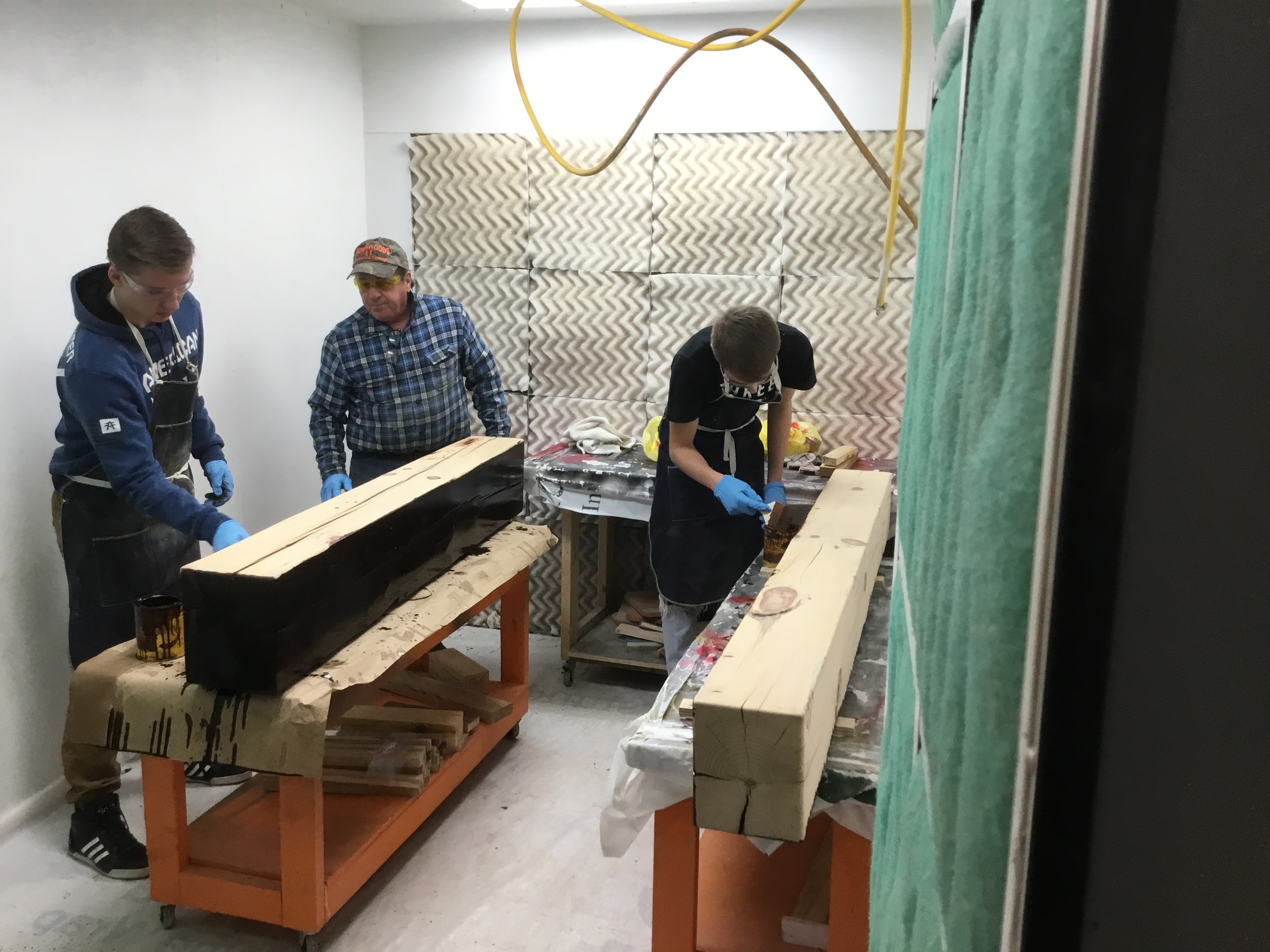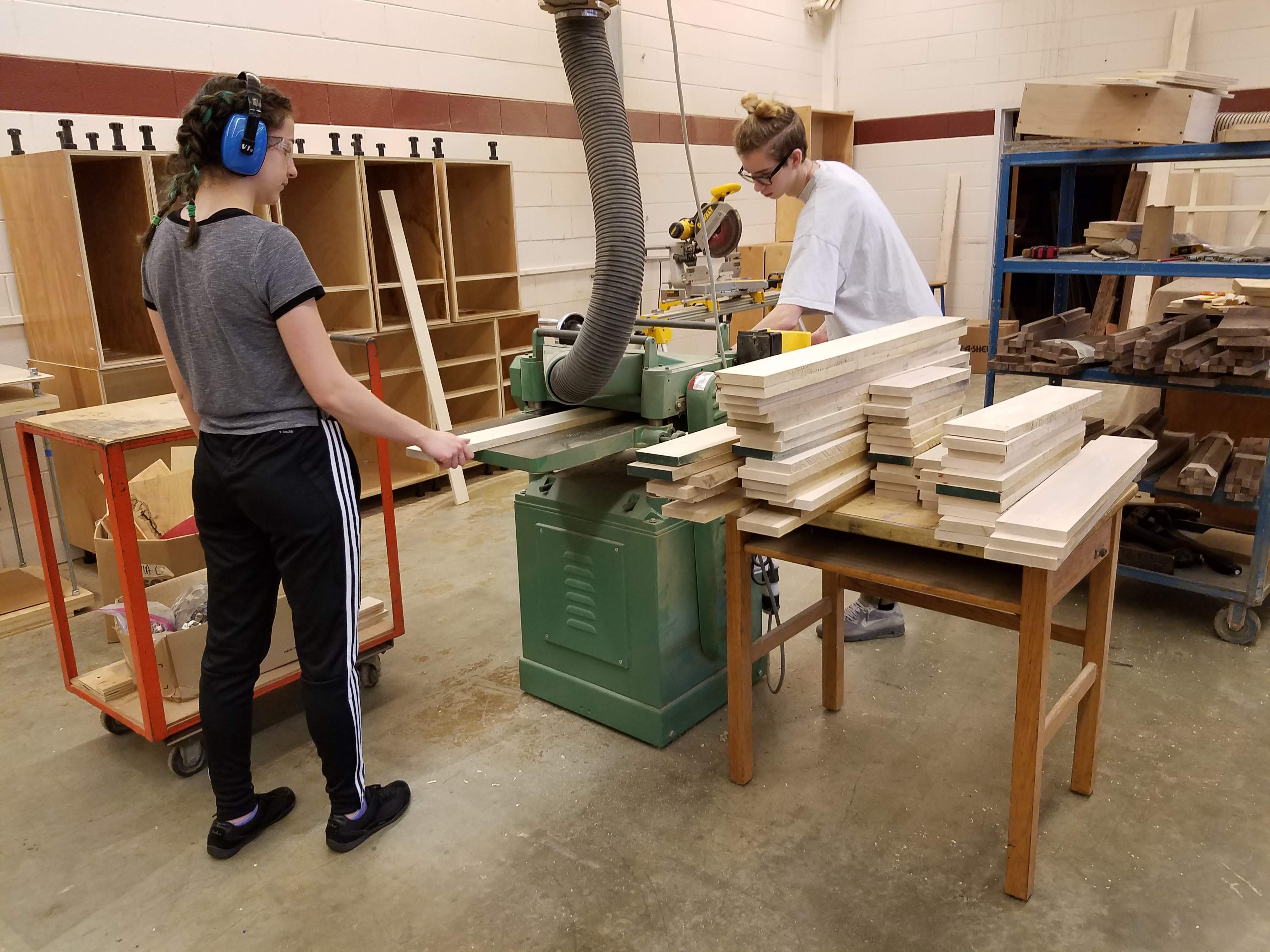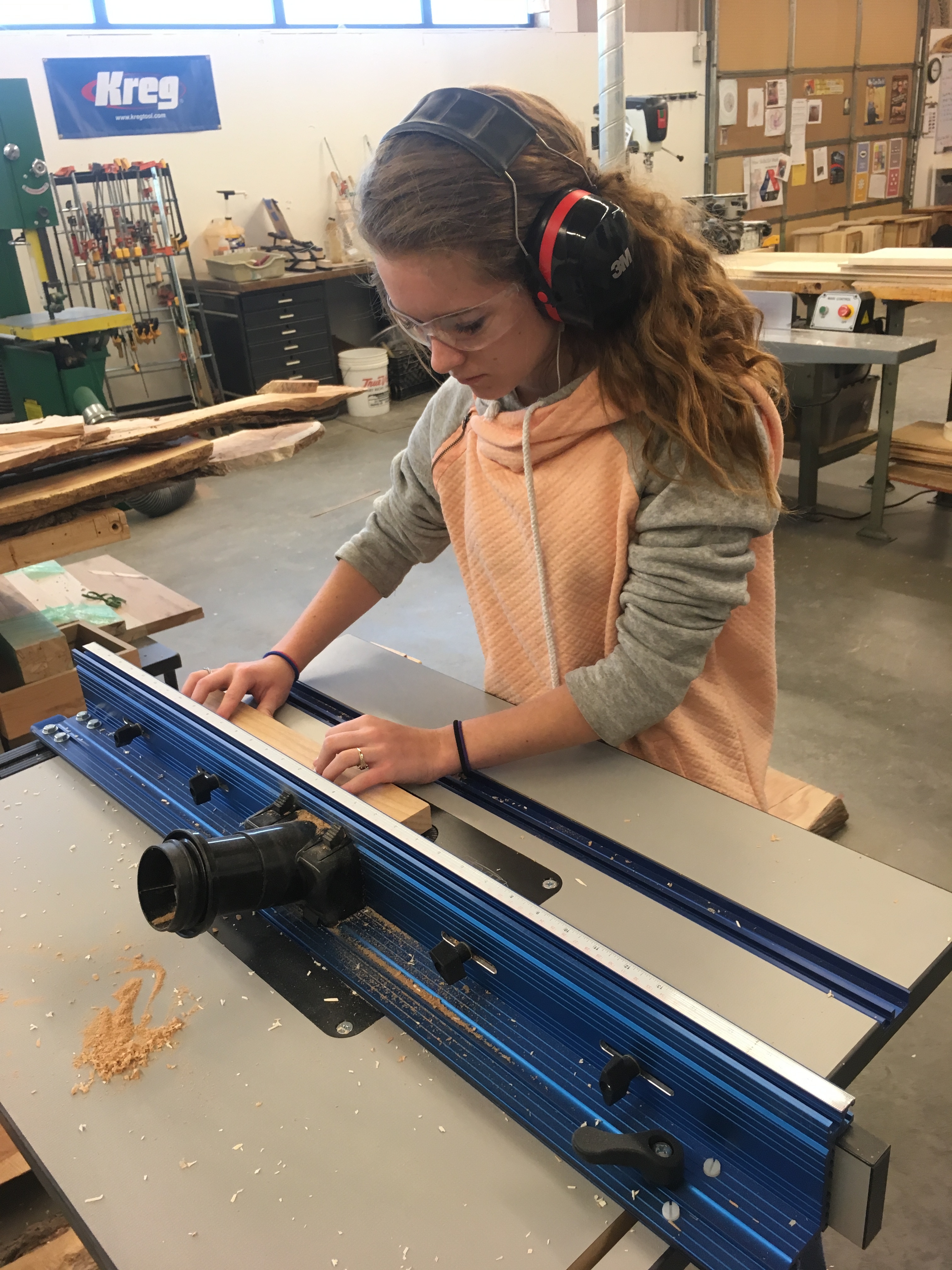The Trials and Tribulations of Teaching Woodworking Online

Doug Rappe of the Greater West Town Community Development Project used this setup for teaching a Google Classroom remote wood identification class.
The novel coronavirus pandemic has left an indelible mark on education institutions across North America by forcing the vast majority of schools to close for the remainder of the academic year.
The transition from teaching students in the classroom to online has most especially been fraught with challenges for woodworking instructors belonging to the Woodwork Career Alliance of North America. As if having to dispense with woodshop activities wasn’t hard enough, most teachers were given only a few days of notice that their school was being shut.
With so little warning, they scrambled to develop new lesson plans for online instruction on the fly.

Don Stoneburner, a student at Boyceville High School, proudly displays the WCA Sawblade certificate he earned after successfully completing the online test.
While online learning cannot make up for the hands-on experience of using equipment and tools to create wood projects, woodworking instructors participating in a survey of the Woodwork Career Alliance of North America explained how they revamped their curricula to incorporate a variety of alternative coursework and online resources. This includes taking advantage of videos, woodworking articles, past SkillsUSA project plans and other materials available online to WCA EDUcation members.
In spite of the disruptions created by COVID-19, several of the high school instructors said they already had or were in the process or preparing students to take the online test to earn their WCA Sawblade Certificate. Fortunately these students had already been evaluated on machine setup and operation on jointers, table saws and other basic woodworking equipment before their schools closed.
Some of the key questioned posed in the WCA COVID-19 survey included:
- How have their programs been impacted by the coronavirus outbreak?
What types of information are they teaching online? - How many educators are accessing the WCA’s resource library and what materials are they using?
- What tools would they like to see added to the resource library?
- Would they be willing to “donate” resources they have developed for their program to the WCA’s tool box for use by their peers?
Survey Highlights
Twenty-eight woodworking educators responded to the survey, including 26 high school teachers, one college instructor and one community training program instructor.
Seventy-nine percent of the respondents said their schools were shuttered due to state stay-at-home orders and were teaching classes online. Fourteen percent said their schools were closed and they were not teaching online.
Forty-six percent said they were utilizing WCA online training resources, with several others indicating they planned to take a closer look at the videos and written materials available.
The bulk of the survey was composed of open-ended questions. Most of the teachers participating in the survey gave permission for information from their responses to be directly attributed to them In most cases they were sent questions to clarify or embellish some of their responses.
What follows are encapsulated summaries of how some of the woodworking instructors who took part in the survey have dealt with the shift to teaching classes online.
Frank Fetzer, woodworking, engineering and math teacher, Boyceville High School, Boyceville, WI
Fetzer said he featured measurement demonstrations and tests, YouTube woodworking videos and online discussions have been featured in online classes. In addition, he said he gave students “home maintenance assignments.” “These are not necessarily woodworking, but does give them something hands-on to do at home.” He also had students read/watch Fine Woodworking articles/videos with assigned write ups. Finally, he’s working on helping eligible students pass the WCA Sawblade test. Read expanded commentary.
Mickey Turner, woodworking 1, 2, 3 at John Holmes High School, Edenton, NC
“This whole thing has been hard for me to process,” Turner said. “I am a first-year teacher still learning the process and now this. Especially considering that I just got to the apply power tools agenda. There is no app for woodworking.” In the absence of being able to provide hands-on woodworking instruction for his students, Turner said, “I’ve been giving them bell ringers like school.net test questions, portable and stationary power tool safety procedures and quiz booklets. I have added some short instructional videos on portable power tools and some YouTube videos.”
Scott Bruening, tech education teacher, Kettle Moraine High School, Wales, WI
“I’m just finding it really difficult not being able to do anything hands-on at this point,” Bruening said. “I’m just trying to get more resources online for students to access. I’ve been using the older version of the textbook. We’ve focused on techniques and types of joinery in a visual manner, plus vocabulary, key terms and general knowledge items.” Read expanded commentary.
Marc Fry, woods manufacturing instructor, Green Bay East High School, Green Bay, WI
“I am struggling to find any visual examples, formats or layout of any woods instructor online,” Fry said. “Is there a way someone could provide Google classroom-ready slides and worksheets that are easily downloadable along with some kind of answer sheet and key?” Fry added that he taught four sections of Woods 1 and Advanced Woods 2. One online resource Fry mentioned using by name is edpuzzle.com.
Tom Hillstead, cabinetmaking instructor, Saint Paul College, Saint Paul, MN
Hillstead is the only college-level woodworking instructor to participate in the survey. He said he focused on teaching CAD/CNC software; laminates and surfaces; hardware used in casework and estimating. “I have 15 students this semester and they have adapted very well to our adjusted learning environment,” Hillstead said. “It’s not their first choice but… We have five courses this semester, three of which we were able to move online. One course, which was to run the last 8 weeks, will require “gap” instruction once we are able to return to the shop later this summer. It’s been an adjustment for everyone, but overall, it’s been positive. Even though the hands-on experience can never be replaced, my students and I have all learned a lot about the available technology, and I’m looking forward to incorporating where I can into future courses. Lots of videotaped demos!”
John Stearns, instructor, The MiLL and Peyton High School, Colorado Springs and Peyton, CO
In transitioning to online teaching, Stearns said he placed greater emphasis on reading and creating drawings, soft skills like leadership and personal growth, the business of woodworking and cabinet identification. He added that he has used old SkillsUSA project drawings in the WCA’s online resource for students to practice creating a bill of materials.
Roger Peterson, woods instructor, Hurley School, Hurley, WI
“I’m just trying to keep the kids engaged and understand how to do some things online,” Peterson said. “We are project planning for next year, revisiting some WCA Sawblade credentialing material (including measurement) and seeing how we can apply what we learned through the year to work on ‘around the house’ projects. This is a challenging time and when students see everyone working together to get through this … THAT is what they are truly learning!”
Tom Witt, woods manufacturing instructor, Monroe High School, Monroe, WI
“I am a dual credit teacher instructing 47 students online and have access to Patrick Molzahn’s information and videos on the WCA website,” Witt said. “We have focused on technical information and machine safety utilizing text and video demonstrations.” For his beginning level Woods Manufacturing 1 class, Witt said, “I am going through all the machines in the order that we use them to ‘square’ a single piece of stock including radial arm saws, jointers, planers and table saws.”
Doug Rappe, program coordinator, Greater West Town Training Partnership, Chicago, IL
“We are teaching the classroom portion of the curriculum remotely including math, reading, print reading and job readiness,” said Rappe, whose program trains economically disadvantaged adults for woodworking careers. Rappe said he has used some of the WCA videos produced by Patrick Molzahn, director of the cabinetmaking and millwork program at Madison College. Read expanded commentary.
Molly Turner, wood manufacturing instructor, Ignacio High School and Middle School, Ignacia, CO
“I’ve used Fine Woodworking/Fine Homebuilding online access to have students do research and read articles,” Turner said. “We are also getting ready to test students for their Sawblade certificates in my upper level classes. These students have reviewed machine set-up and operation standards. I’m also going to use the Sawblade certificate quiz as part of their final exam.”
Turner said she has utilized a Career Exploration packet that features “two career profiles including salaries, pros and cons, SkillsUSA framework and a resume,” plus UGears model kits with a project log and a product review at the end. “I’m brainstorming on project learning options that can be done at home with no tools, maybe pre-fabricated kits similar to UGears laser-cut models or paper automata karakuri projects,” she added. Read expanded commentary.
Christopher Randall, Asheville High School, Asheville, NC
“My candidates all did the Sawblade certificate performance widget right before we were all sent home,” Randall said. “I digitally reviewed so that they could take their online Sawblade tests. I’ve also used the free Fine Woodworking archives link on the WCA’s website.” Randall added, “Since turnout is low and I am at home practicing social distance and home schooling my own children, I am simply filming videos and sharing building projects with my students. They are sharing back with me what they can build at home.” Read expanded commentary.
Steve Swanson, Wauwatosa West High School, Wauwatosa, WI
“We are designing a kitchen using ADA standards and some household measurements,” Swanson said, adding that he utilized some of the measurement materials available in the WCA’s online resources.










Leave a Reply
Want to join the discussion?Feel free to contribute!